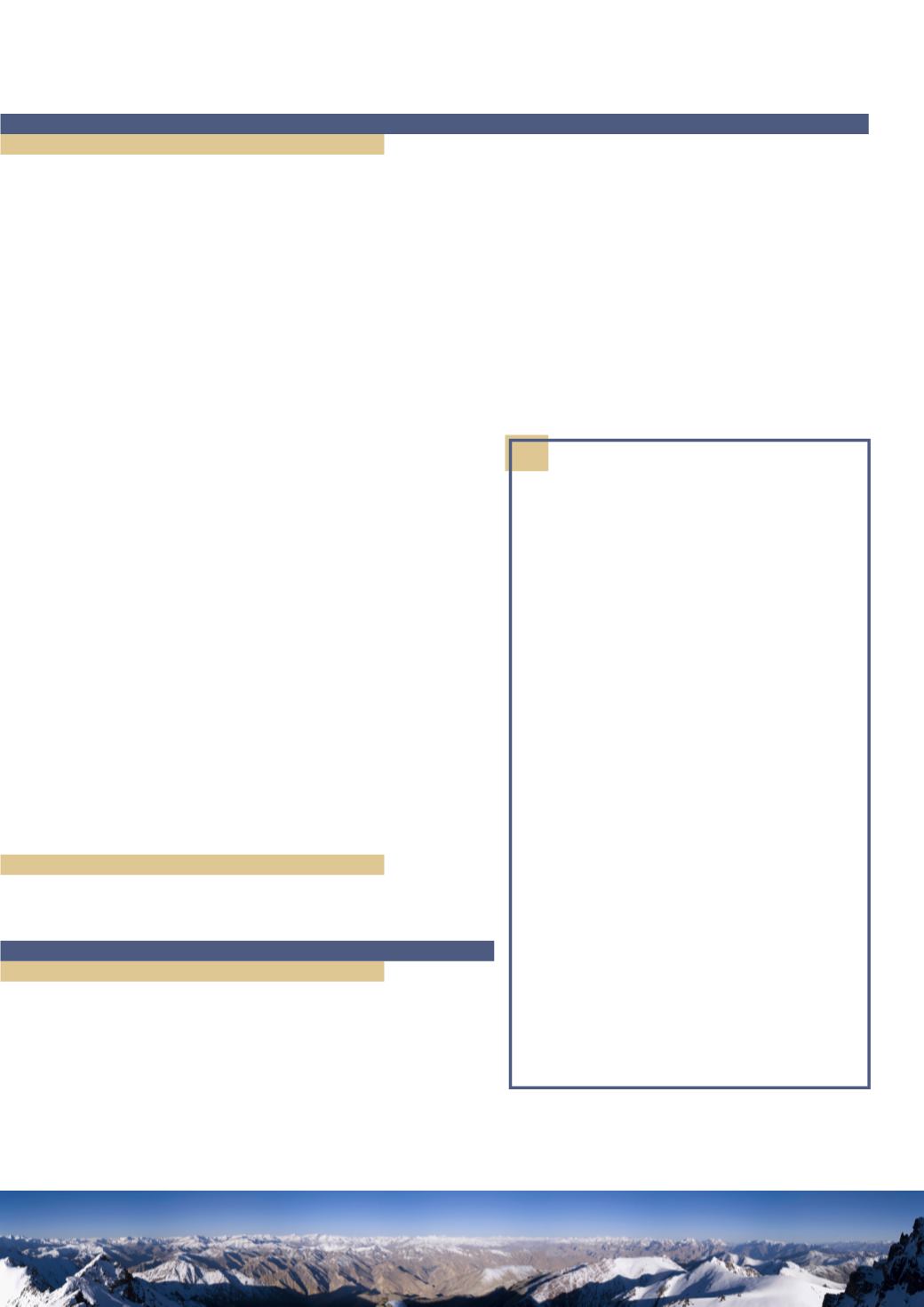

The Serac Collapses
The Norwegian team enters the Traverse at around 8 pm. About an hour later, the Serac reinforces its fearsome
reputation as a massive icefall shatters the eerie silence. It instantly kills one of the climbers. In shock, two climbers in
the direct vicinity try to come to terms with what has happened. They realise that the icefall has not only swept away
their friend but has also cut the anchored rope − their only lifeline. They have some thinner emergency rope with
them. They do not hesitate to anchor it in the icy and rocky ground just below the towering Serac. Risks are escalating
further. Most of the climbers are suffering with the effects of exhaustion, dehydration and the first symptoms of high
altitude sickness. Darkness and the severed rope leave them with only a few options:
Try to find the emergency rope. In darkness and with only the support of head lamps, it is not easy to locate.
1.
Descend without the support of fixed ropes. This is a very difficult and technical descent, necessitating free-
2.
climbing with the help of axes and ice-crampons.
Head for the Chinese side of the mountain to try and effect a descent.
3.
Bivouac overnight and then descend in daylight.
4.
Some of the teams start descending without the aid of the
fixed ropes, as they are oblivious of or simply cannot locate
the emergency rope. They free-climb their way through the
Traverse. Any false move will cause them to fall to their deaths.
This happens to a climber from the French expedition and he
is the fourth fatality.
From the options available, arguably the best is bivouacking
overnight on the snowfield, just next to the mouth of the
Traverse. That offers the relative safety of morning daylight
to descend through the treacherous sections of the Traverse
and Bottleneck. However, the climbers will be exposed to
the relentless wind and cold. Unfortunately, there has been
no planning or preparation for this; no one brought sleeping
bags or bivouac sacs, or any spare oxygen, food or water. The
climbers huddle together in a make-shift shelter of snow,
trying to stay awake and preserve as much warmth as possible.
This raises the question of:
3. Whywere these very experienced climbers unprepared
to deal with situations other than those they had
expected and thus planned for?
Rescue Efforts
It becomes ever clearer to those at Camp IV that they are
witnessing an unfolding disaster. They realise that most of
the climbers who set out for the summit a day before are still
stranded, and their state will be deteriorating. One climber,
hampered by high altitude sickness, is zigzagging on the Serac,
then is seen no more. He has been taken by the mountain. The group of climbers near the entrance to the Traverse,
entangled in their ropes, are not moving and those climbers who pass them can do little to help, given their own
precarious condition.
”But when we were there [mouth of the Traverse] we
couldn’t recognise actually anything and we were
looking at finding our ropes and I couldn’t find our
ropes, but I saw this edge dropping, that the terrain
is falling down. So I was looking and looking and I
suddenly saw two other torches in the snow. So
I went over there and it seems to be Gerard and
Marco, I said,” What are you doing here, we have to
keep on going down.” But they said “Yeah, we can’t
find the ropes, we have decided to make a bivouac
over here.”
And I tried to energise them and I said,” Listen, come
on, stand up we have to find them”, and Marco has
some energy so he stood up and together we tried
to find somewhere to climb down but then finally
Marco was screaming to me, ”Don’t go down any
further because it is too steep, you will fall”, etcetera.
So I climbed up again I looked somewhere else, I
started screaming to other climbers because the
stupid thingwas, a fewhundredmetres down, we still
saw these head torches. Sowe were there thinking “It
is just a matter of connecting, communication and
they will scream to us go to the left or to the right,”
but finally they didn’t give any reaction because they
were too far away.
So finally, they convinced me we have to make a
bivouac because tomorrow the sun will be rising and
then we will find the way. And I thought, maybe this
is the best solution...”
Wilco van Rooijen
(Norit K2 Dutch International Expedition 2008)
Page 06
















